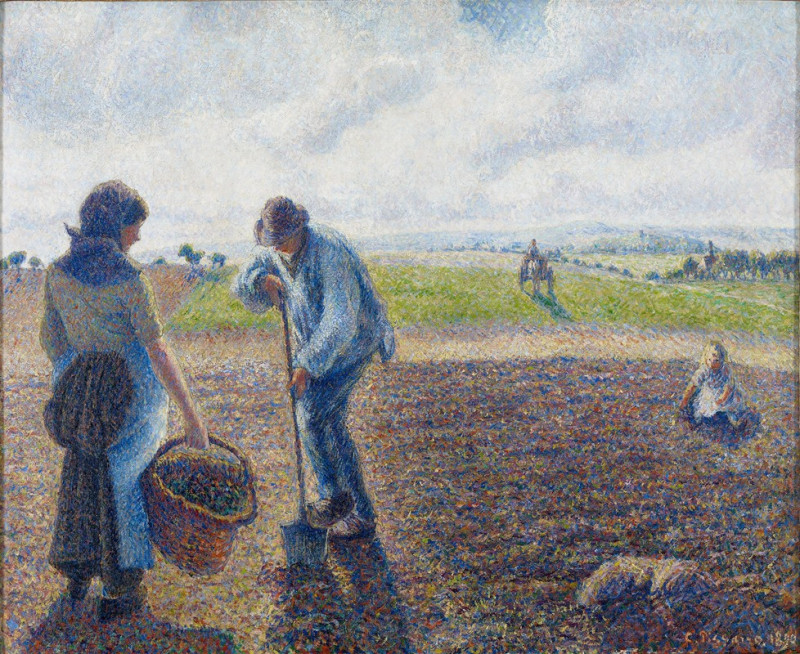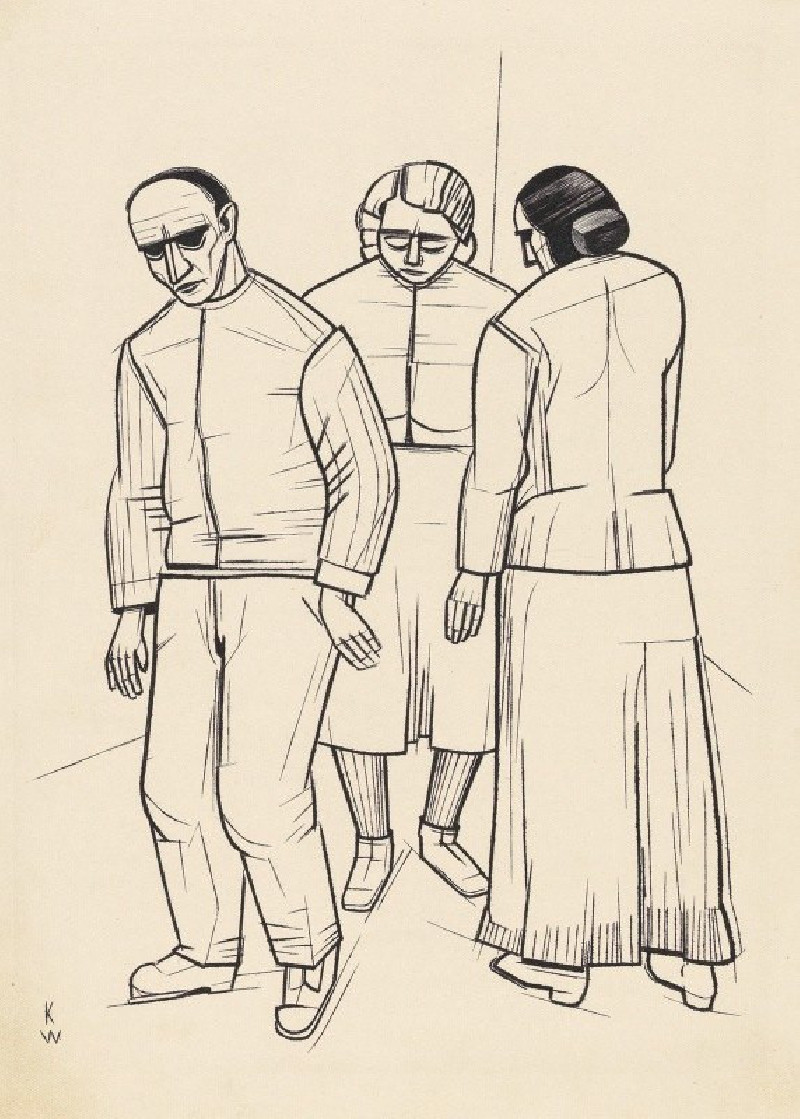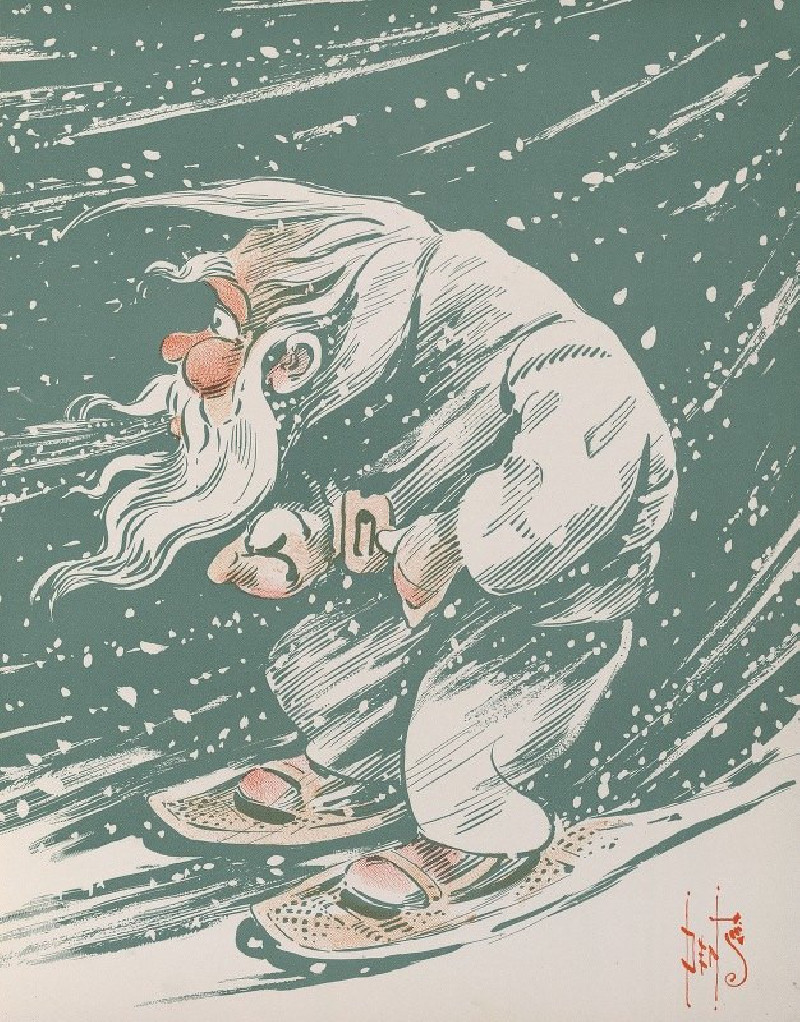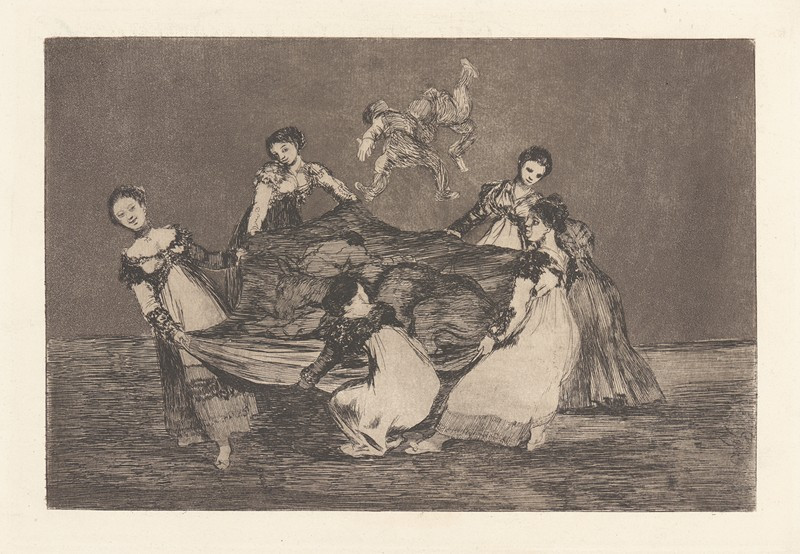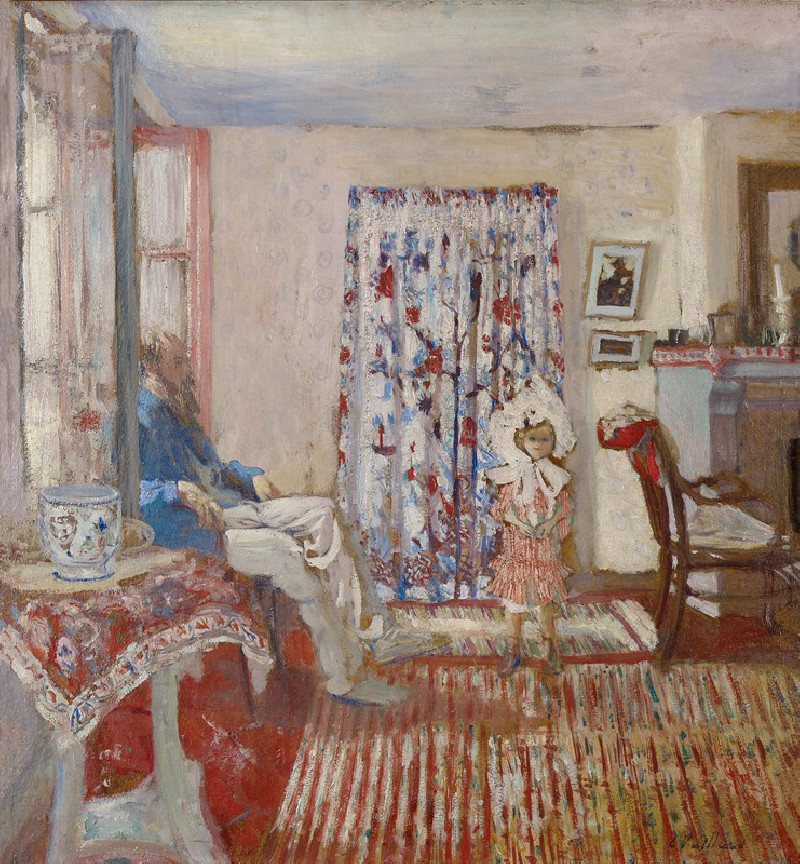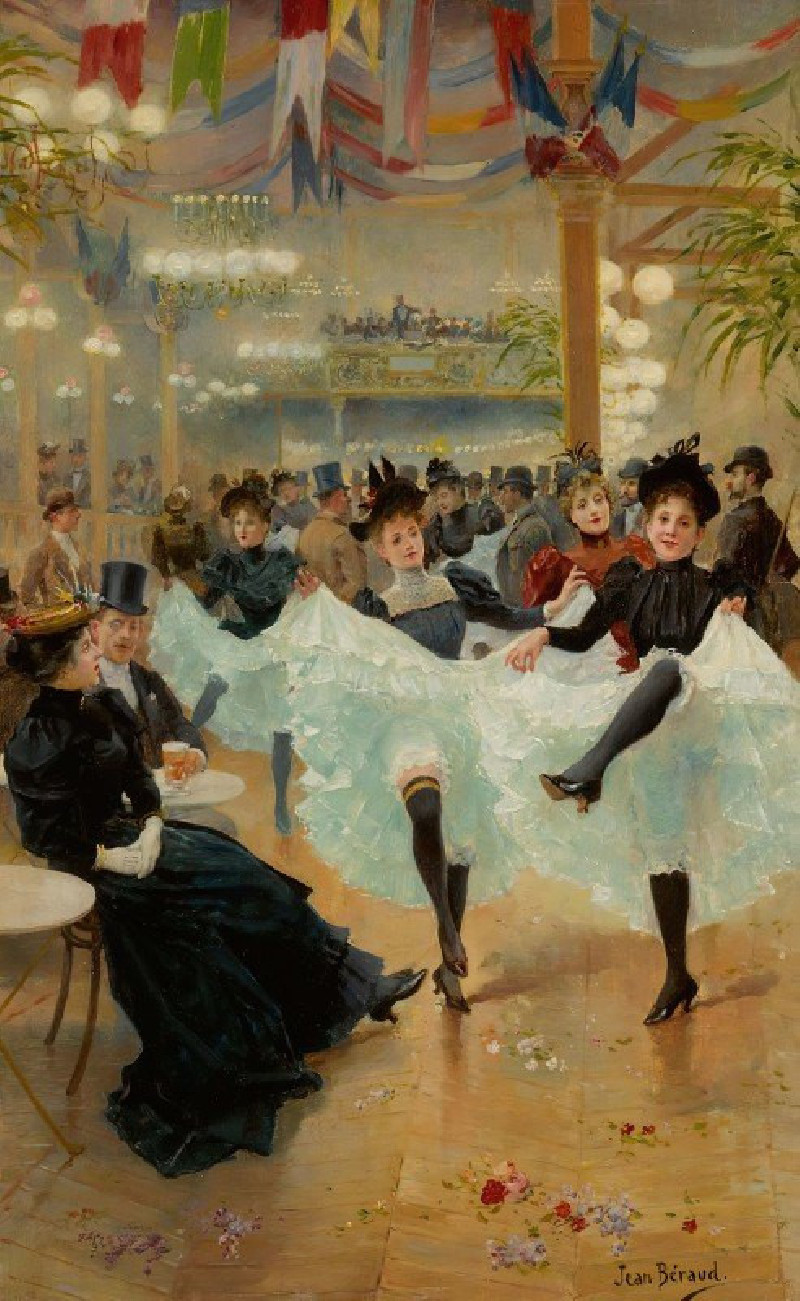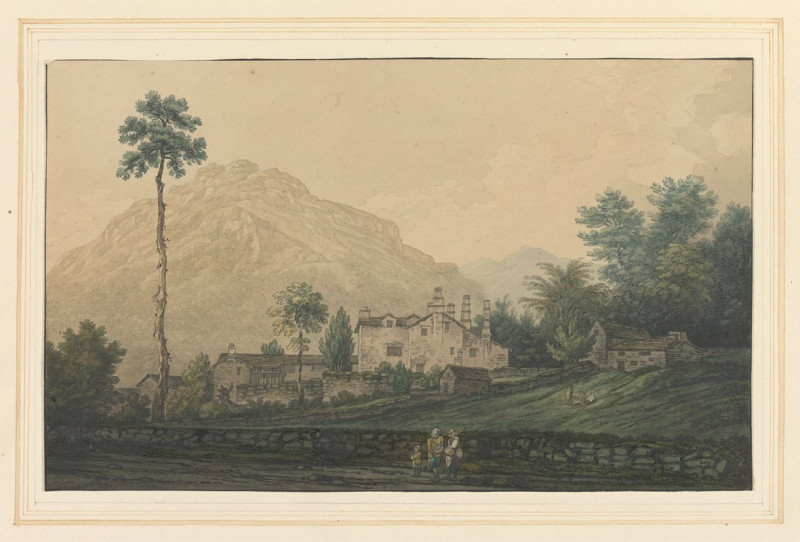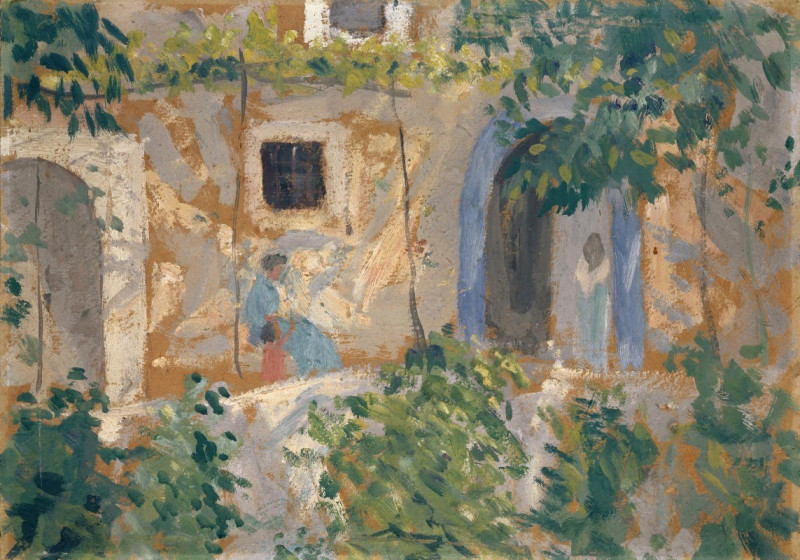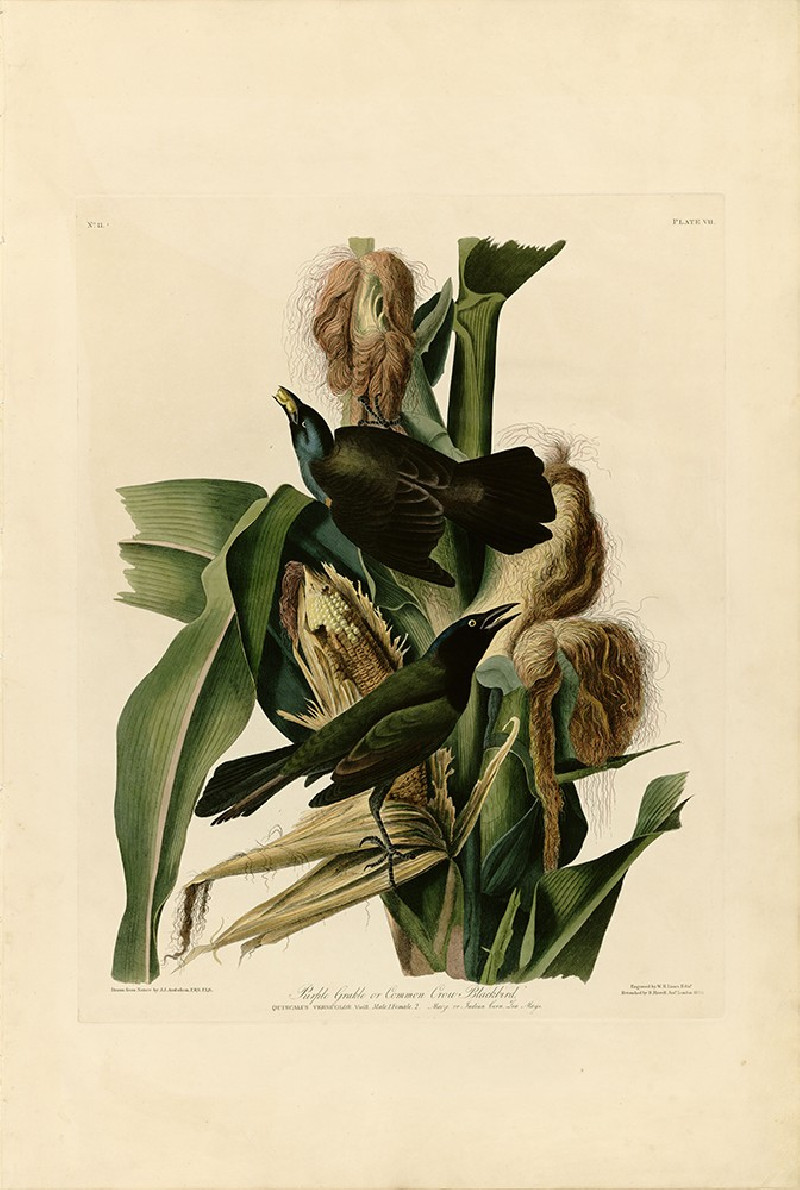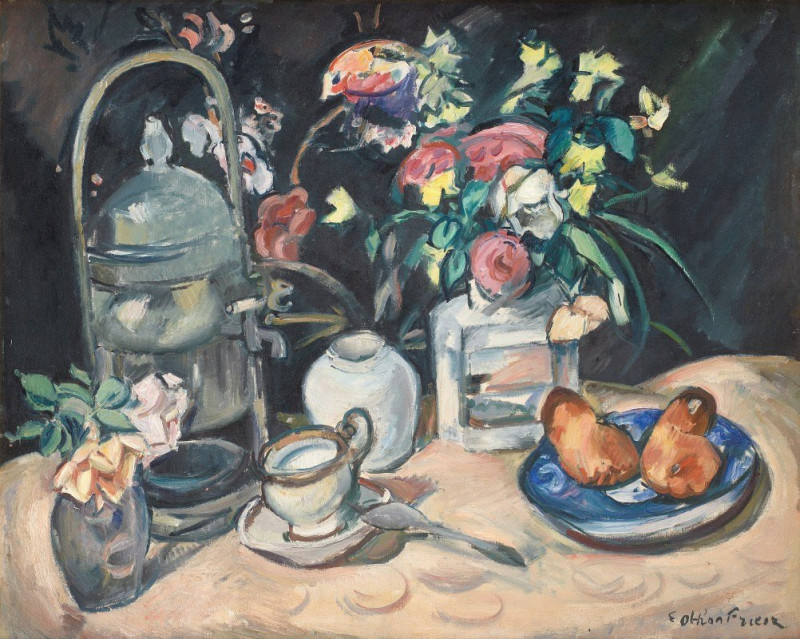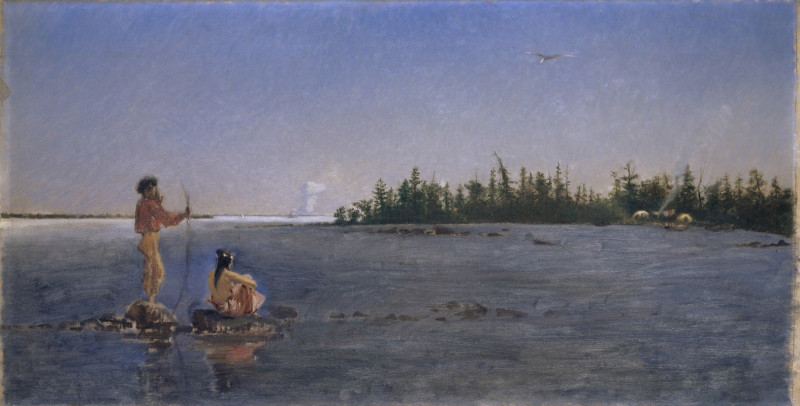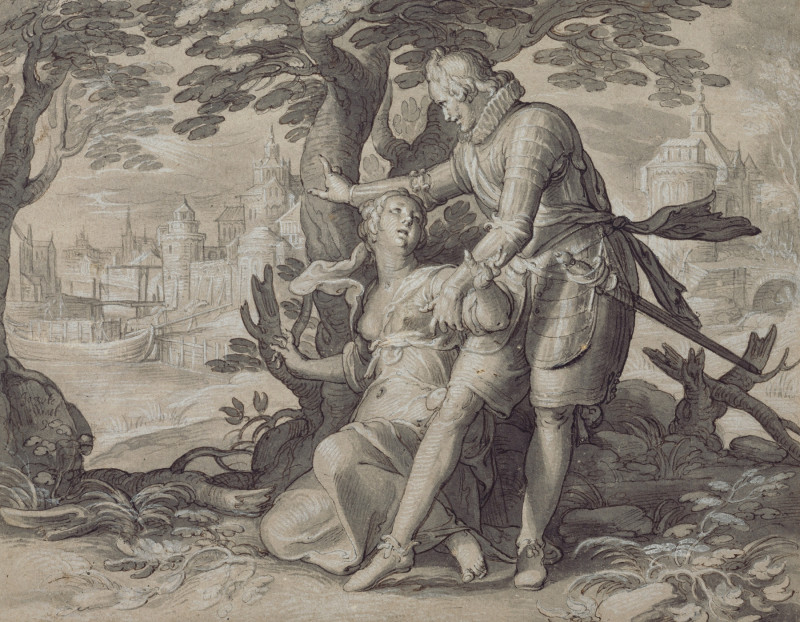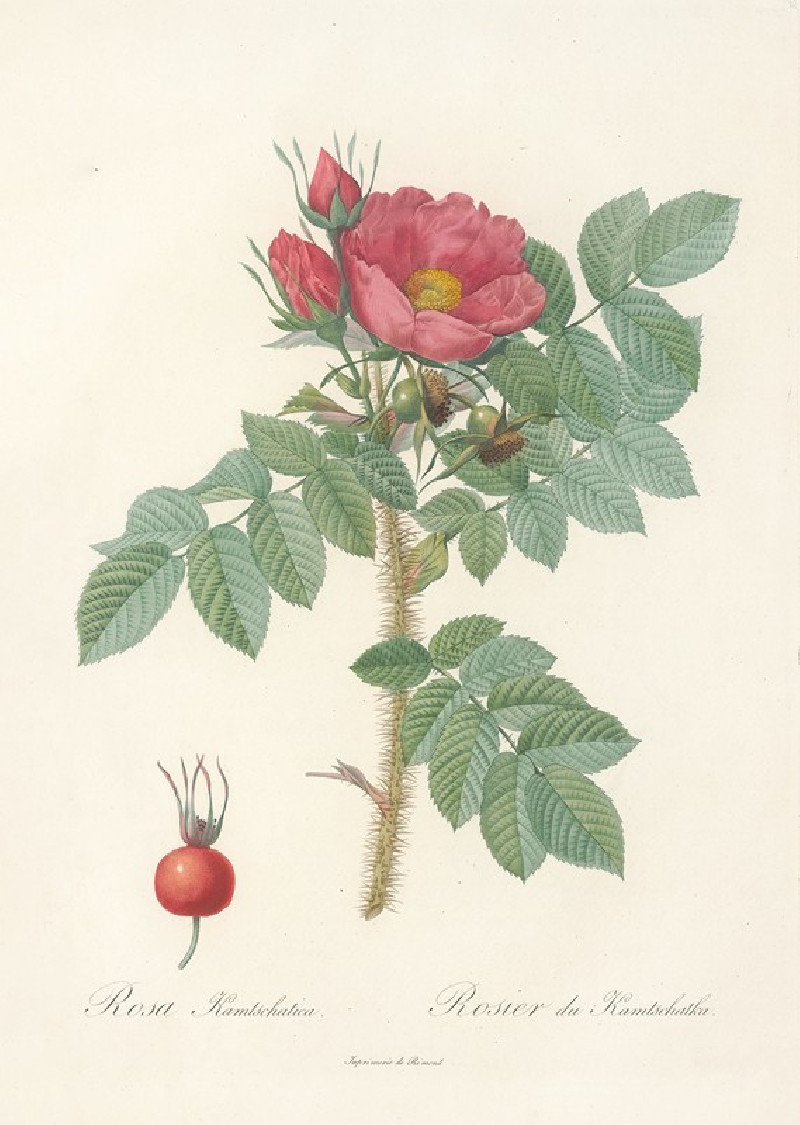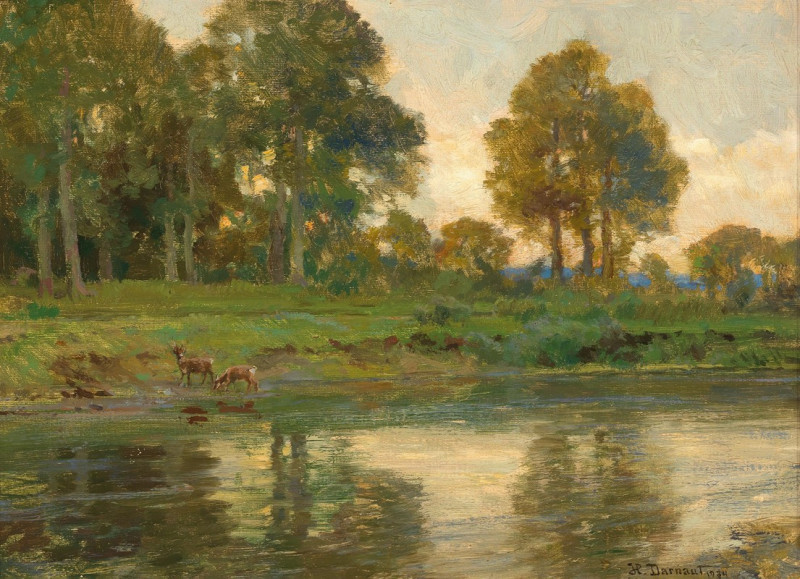Paysans dans les champs, Éragny (Peasants in the Fields, Éragny) (1890)
Technique: Giclée quality print
Recommended by our customers
More about this artwork
"Paysans dans les champs, Éragny" (Peasants in the Fields, Éragny) by Camille Pissarro, created in 1890, beautifully captures the essence of rural labor and scenic tranquility through the eyes of the Impressionist master. Set in the village of Éragny, where Pissarro spent the latter part of his life, this painting reflects his continued interest in the lives of peasants and the landscapes that envelop them.The canvas comes alive with the vibrant application of color and light — signature elements of the Impressionist movement. The scene is filled with figures engaged in various farming activities under an expansive sky. In the foreground, the central focus is on two figures: a woman standing with a basket and a man bending over as if he's digging into the earth or perhaps examining a plant. These characters are portrayed in a natural, unposed manner, giving the painting an aura of authenticity and immediacy.In the background, the gentle rolling hills dotted with additional figures suggest the expanse of the rural setting and the ongoing nature of agricultural life. The use of color in the painting is particularly striking; the field is a tapestry of blues, greens, and earth tones that shimmer under the vast, cloud-streaked sky. This not only enhances the visual depth but also conveys the texture of the outdoor environment.
Delivery
Returns
Blessed are they who see beautiful things in humble places where other people see nothing. — Camille Pissarro
Camille Pissarro (1830-1903) was born on St.Thomas (now the US Virgin Islands) to a Portuguese father and a Dominican mother. He went to Paris to study art at Ecole des Beaux-Arts. He was an early pioneer of pointillism and neo-impressionism and later became a mentor of many famous impressionist painters including Cezanne, Manet, Renoir, and Gauguin. His paintings depicted rural and urban French landscapes and lifestyle. Many of his works politically captured images of peasants and laborers. Today, he is considered the father of impressionism.

